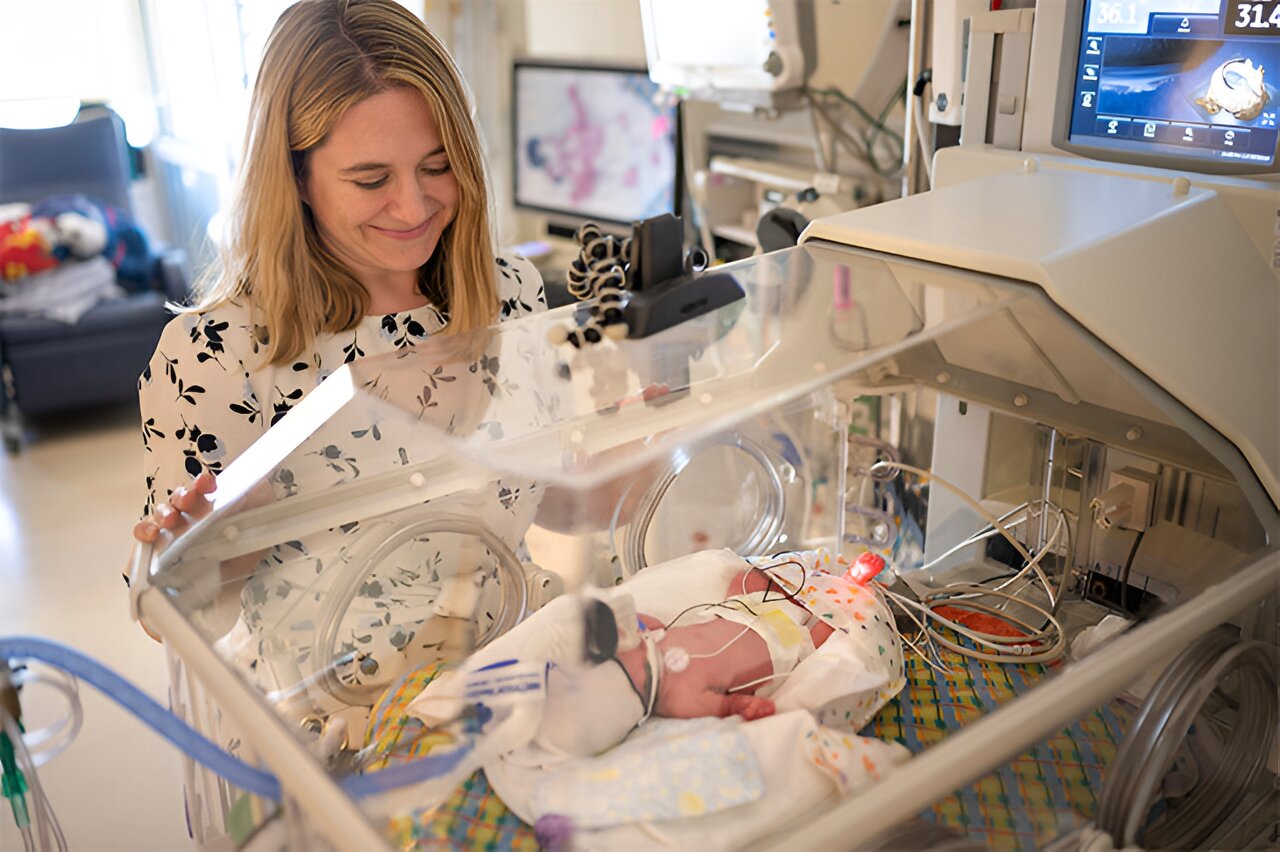Preeclampsia (PE) is a significant contributor to the increase in maternal morbidity and mortality worldwide, with particularly alarming numbers in the United States, where it affects about 2-8% of pregnancies, resulting in premature birth with associated morbidities for their infants as well. A new study by researchers at UCLA Health finds that early detection of specific microRNAs (miRNAs) packaged in vesicles may offer the opportunity to predict preeclampsia in pregnant people before clinical symptoms manifest.
The study, led by Dr. Sherin U. Devaskar, MD, executive chair of the Department of Pediatrics and physician-in-chief at UCLA Mattel Children’s Hospital, identifies the potential of a specific set of miRNAs within extracellular vesicles (EVs) — tiny particles that transfer information between cells — as a noninvasive biomarker for pre-eclampsia.
The study involved a comprehensive analysis of 33 participants, including a control group of seven non-pregnant women and a sub-group of 12 women with healthy pregnancies. The remaining 14 women exhibited clinical symptoms of pre-eclampsia, forming a critical part of the study’s focus on early detection and prediction of the condition.
Compared to women with healthy pregnancies, women with pre-eclampsia had miRNAs found within EVs in early pregnancy. Researchers identified 148 miRNAs with differential abundance in pre-eclampsia EVs: 12 in higher amounts and 135 in lower amounts compared to EVs from healthy pregnancies. Specific groups of miRNAs showed clear differences in how many were present in EVs from women with pre-eclampsia.
The EVs taken from the blood of pregnant women with preeclampsia contained a group of microRNAs starting as early as the first to the second trimester of pregnancy. These miRNAs follow a specific pattern throughout pregnancy that changes when pre-eclampsia develops. Some miRNAs originate from the placenta and act as messengers between the placenta and other organs in the body. The authors say this panel of miRNAs has the potential to predict the development of symptoms of preeclampsia, especially late-onset preeclampsia.
“It is critical that we take steps toward early detection and prevention of pre-eclampsia,” said Devaskar. “It continues to be the leading cause of maternal mortality and morbidity worldwide, and our findings underscore the potential to address this persistent public health concern.”
The findings suggest a future in which miRNAs within EVs could transform the current monitoring and care of mothers everywhere. They would serve as noninvasive biomarkers for early detection of preeclampsia in pregnancy and significantly enhance the understanding of the condition’s pathophysiology.
Other authors: Dr. Ghosh, Ms. Thamotharan, Dr. Fong from the Department of Pediatrics, and Dr. Janzen and Ms. Lei from the Department of Obstetrics.


